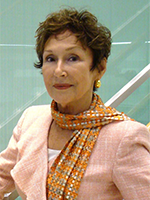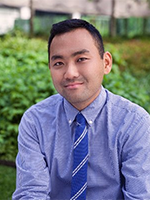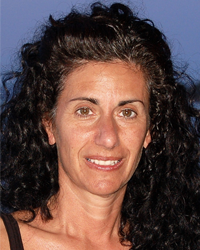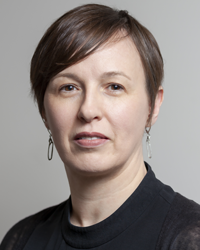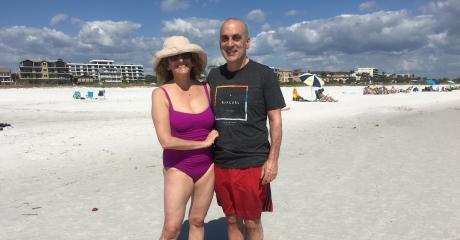Homelessness does not mean just one thing—and there are multiple federal classifications for what qualifies as “homeless.” The Department of Housing and Urban Development’s definition of homelessness distinguishes between individuals and families, the former of which make up most of the homeless population. We can see people experiencing homelessness in most urban centers across America, but there are also those who are staying in emergency homeless shelters or “couch surfing”—temporarily staying with friends or family members.
In January 2020, the U.S. federal government national data found more than 580,000 people experiencing homelessness. While data from the National Alliance to End Homelessness reports a general downward trend in the rate of homelessness across the past decade, between 2019 and 2020 nationwide homelessness increased by 12,751 people—marking 2020 as the fourth straight year of incremental population growth.
When we look more closely at the data, we see that some groups have done better than others. Since 2007, veterans have seen a 39% decrease in homelessness, people in families have experienced a 27% decrease in homelessness, and persons experiencing chronic homelessness decreased by 35%. These reductions are, in part, a function of national, state and local policies that have targeted these sub-populations. What’s particularly problematic is that 70% of the homeless population—individuals who are not veterans nor chronically homeless—have only experienced a 1% decrease.
What’s more, this population is getting older. The trend in the aging of the homeless population has been occurring over the past 30 years as the average age of single adults experiencing homelessness has increased. Estimates suggest that 35% to 50% of single homeless adults are ages 50 and older. As a study from the Joint Center for Housing Studies reported, there were 325,500 sheltered adults ages 51 and older in 2017.
‘Geriatric conditions have been found to affect individuals experiencing homelessness 10 to 20 years earlier.’
Readers might be thinking, but wait, age 50 is so young. Why is this age used? For one, having poor mental and physical health, as well as poor access to healthcare, can accelerate aging. So, the medical age of persons experiencing homelessness exceeds one's biological age. And geriatric conditions have been found to affect individuals experiencing homelessness 10 to 20 years earlier than in their housed counterparts.
An Upward Trend in Older Adult Homelessness
Given the health complexity of this population, the expected growth of older adults experiencing homelessness over the next decade is worrisome, with as much as a threefold increase in this population by 2030 being forecasted. It is suggested that younger baby boomers (those born between 1955 and 1964) are disproportionately likely to experience homelessness—and have been at greater risk of homelessness at some point in their lifetime compared to older boomers.
When this group came of age, there was significant competition in the labor and housing markets, which were flooded with older baby boomers. Also, employment, wages and employer pension programs were on the decline as housing costs were on the rise. Plus, the United States experienced economic recessions in the 1970s and 1980s as younger boomers entered these markets, while simultaneously cutbacks were made to social safety net programs under the Reagan administration (he was famous for suggesting that homelessness was a lifestyle choice).
When we add in the 2008 foreclosure crisis, which caused significant loss of wealth equity, the potential reasons for economic insecurity and homelessness in this population multiply. Today isn’t any more secure for the financial well-being of older adults as we navigate our third year in a pandemic and see job loss, budget cuts and an end to the federal eviction moratorium.
We would be remiss if we did not also talk about the historical discriminatory and predatory practices against Black and Indigenous populations, which have had devastating consequences for the accumulation of wealth, and subsequently to the health and housing outcomes for communities of color. As Trymaine Lee states in the 1619 Project, “The post-Reconstruction plundering of black wealth was not just a product of spontaneous violence but etched in law and public policy.” Federal policies have actively excluded generations of Black, Indigenous and People of Color from wealth-building programs.
How Adults Age Into Homelessness or Become Homeless in Later Years
Considering older adults represent a highly diverse group with distinct life-course trajectories and experiences, there are many pathways by which one can become homeless. One pathway is trying to remain housed on a fixed income amid rising rental costs. Financial insecurity is a particular challenge for older women, who often have been unable to accumulate sufficient assets or wealth over their lifetimes to live independently and simultaneously afford housing, food, medications and healthcare. The significant lack of affordable housing that is accessible and adaptable to the changing health and functionality of older adults is another pathway.
Study members expressed a desire to be treated as humans.
Differentiations can be made between those whose first experience of homelessness was before age 50 and those whose first time experiencing homelessness was after age 50. Those whose first experience was prior to age 50 are more likely to have experienced chronic homelessness or multiple episodes of homelessness over their life and have higher rates of childhood trauma and abuse, mental health and substance use disorders, limited social support, low socioeconomic status, underemployment and incarceration.
In contrast, older adults’ whose first experience of homelessness was after age 50 (about 44% of older homeless persons) are likely to have experienced a health or financial crisis in later life, a relationship breakdown or loss of loved one, fixed income and the loss of ability to work.
As the project director for a large study examining how to best support older adults with experiences of homelessness to age in the right place, I coordinate an advisory group of older adults with lived expertise. Recently, I asked the group to share one thing they would like the public to know about the experience of homelessness and housing precarity in later life. There was consensus around the lack of hope that can be felt by those who are experiencing homelessness in later life. As well, they conveyed that they felt dehumanized by others who are housed.
The desire for members of the advisory group to be treated as humans resonates with some recent research on how people experiencing homelessness are discriminated against and stigmatized. In borrowing from the work of Robert Butler on ageism, this discrimination toward people experiencing homelessness has been labelled ‘homeism.’ By naming homeism, there is the hope that the broader community will be part of efforts aimed at instigating housing activism and initiatives that will work on eliminating homeism.
Sarah Canham, PhD, FGSA, is an associate professor with a joint appointment in the College of Social Work and College of Architecture + Planning and the associate director of the Health Interprofessional Education Program, all at the University of Utah in Salt Lake City. Canham also works as an adjunct professor in the Department of Gerontology at Simon Fraser University in Vancouver, BC.
Photo credit: Andrey_Popov


